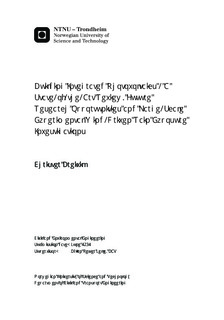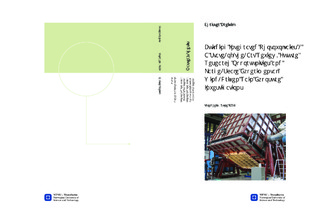| dc.contributor.advisor | Jelle, Bjørn Petter | nb_NO |
| dc.contributor.author | Breivik, Christer | nb_NO |
| dc.date.accessioned | 2014-12-19T11:30:01Z | |
| dc.date.available | 2014-12-19T11:30:01Z | |
| dc.date.created | 2012-11-08 | nb_NO |
| dc.date.issued | 2012 | nb_NO |
| dc.identifier | 566282 | nb_NO |
| dc.identifier | ntnudaim:7364 | nb_NO |
| dc.identifier.uri | http://hdl.handle.net/11250/232230 | |
| dc.description.abstract | This work consists of three scientific journal articles on the subject building integrated photovoltaics (BIPVs), and was initiated by a student project work which consisted of a major revision and extension of an article on BIPVs (appendix A). BIPVs are photovoltaic materials that replace conventional building materials in parts of the building envelopes, such as the roof covering or facades. BIPV systems may represent a powerful and versatile tool for achieving the ever increasing demand for zero energy and zero emission buildings of the near future. In this respect BIPVs offer an aesthetical, economical and technical solution to integrate solar cells harvesting solar radiation to produce electricity within the climate envelopes of buildings. Firstly, this work summarises the current state-of-the-art of BIPVs, including BIPV foil, tile, module and solar cell glazing products (article 1).Secondly, this work addresses possible future research opportunities and pathways for the BIPVs of tomorrow (article 2).Thirdly, this work illustrates challenges linked to the building envelope properties of a BIPV system, and attempts to develop and evaluate relevant methods for testing the building envelope properties of BIPV systems (article 3). Based on this, a sample roof area with two BIPV modules was built and inserted in a turnable box for rain and wind tightness testing of sloping building surfaces with the purpose of investigating the rain tightness of the BIPV system, and observing how it withstood wind-driven rain at large-scale conditions. The BIPV sample roof went through testing with run-off water and wind-driven rain with incremental pulsating positive differential pressure (overpressure) over the sample at different inclinations. The BIPV sample roof was during testing constantly visually monitored, and various leakage points were detected. In order to prevent such water penetration, the steel fittings surrounding the BIPV modules should ideally be better adapted to the BIPV modules and constricted to some extent. It is however important to maintain a sufficient ventilation rate simultaneously. | nb_NO |
| dc.language | eng | nb_NO |
| dc.publisher | Institutt for bygg, anlegg og transport | nb_NO |
| dc.subject | ntnudaim:7364 | no_NO |
| dc.subject | MTBYGG Bygg- og miljøteknikk | no_NO |
| dc.subject | Bygnings- og materialteknikk | no_NO |
| dc.title | Building Integrated Photovoltaics - A State-of-the-Art Review, Future Research Opportunities and Large-Scale Experimental Wind-Driven Rain Exposure Investigations | nb_NO |
| dc.type | Master thesis | nb_NO |
| dc.source.pagenumber | 99 | nb_NO |
| dc.contributor.department | Norges teknisk-naturvitenskapelige universitet, Fakultet for ingeniørvitenskap og teknologi, Institutt for bygg, anlegg og transport | nb_NO |

